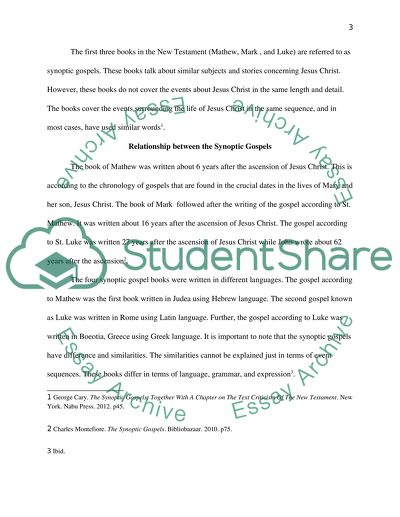Cite this document
(“Synoptic Gospels Essay Example | Topics and Well Written Essays - 2000 words”, n.d.)
Synoptic Gospels Essay Example | Topics and Well Written Essays - 2000 words. Retrieved from https://studentshare.org/religion-and-theology/1454395-give-a-history-of-the-investigation-into-the
Synoptic Gospels Essay Example | Topics and Well Written Essays - 2000 words. Retrieved from https://studentshare.org/religion-and-theology/1454395-give-a-history-of-the-investigation-into-the
(Synoptic Gospels Essay Example | Topics and Well Written Essays - 2000 Words)
Synoptic Gospels Essay Example | Topics and Well Written Essays - 2000 Words. https://studentshare.org/religion-and-theology/1454395-give-a-history-of-the-investigation-into-the.
Synoptic Gospels Essay Example | Topics and Well Written Essays - 2000 Words. https://studentshare.org/religion-and-theology/1454395-give-a-history-of-the-investigation-into-the.
“Synoptic Gospels Essay Example | Topics and Well Written Essays - 2000 Words”, n.d. https://studentshare.org/religion-and-theology/1454395-give-a-history-of-the-investigation-into-the.


